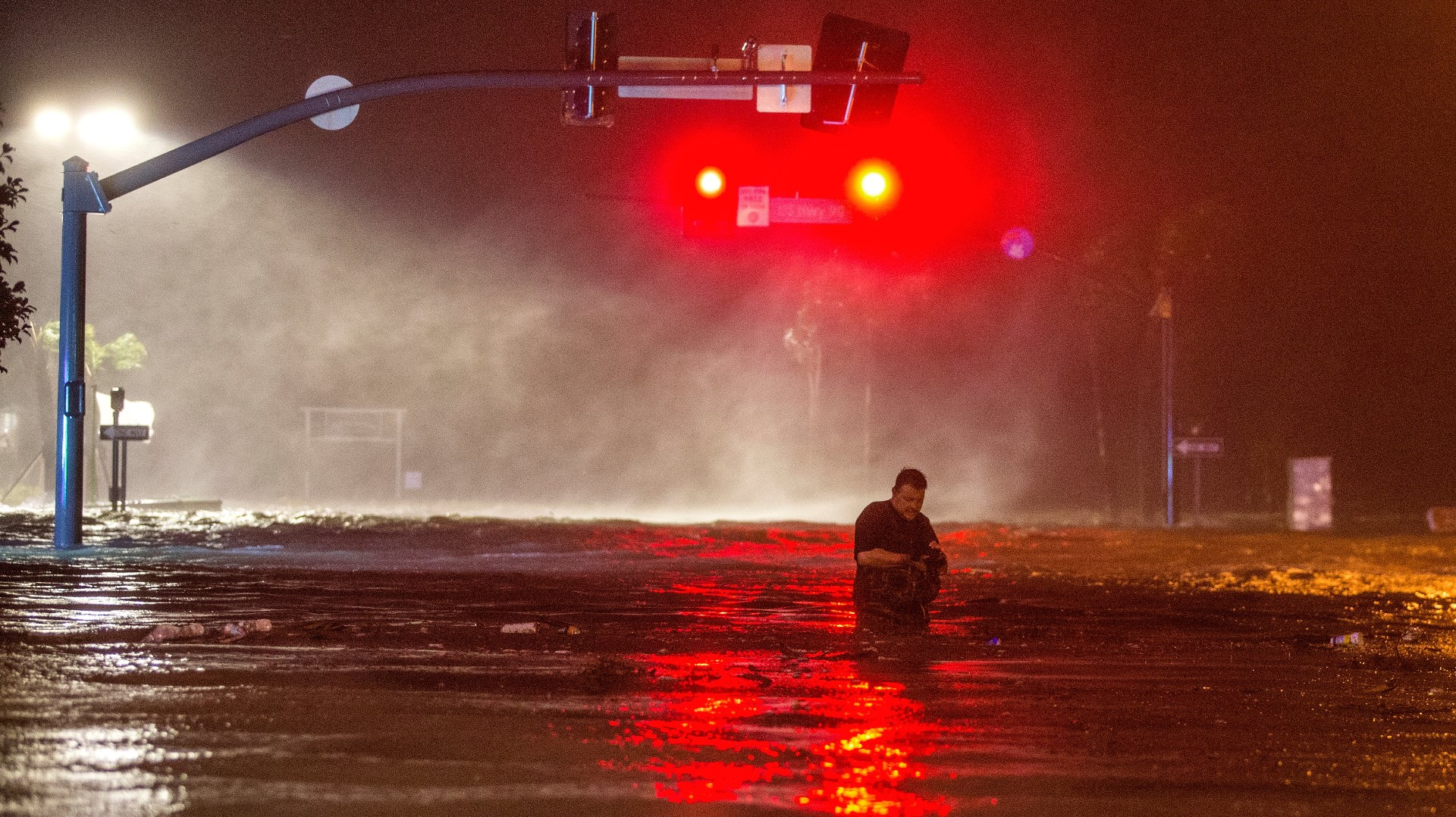Hurricane Nate blasted onto the Gulf Coast and lashed much of the Southeast with heavy rains and winds Sunday, fading to a tropical depression but still knocking out power to more than 100,000 people and driving rivers of water through the streets of many communities.
Nate roared through a region still in recovery mode from a historic season of meteorological devastation delivered by Hurricanes Harvey, Irma, Jose and Maria.
Nate crashed into the Gulf Coast as a Category 1 hurricane Saturday near the mouth of the Mississippi River before making landfall again early Sunday near Biloxi, Miss. Nate became the first hurricane to make landfall in the state since Katrina devastated much of the Gulf Coast in 2005.
As of 10 a.m. CT, Nate's maximum sustained winds were 35 mph, the National Hurricane Center reported.
The center predicted Nate would turn toward the north-northeast then northeast. What remains of the hurricane's eye was forecast to pass over portions of Mississippi, Alabama and Tennessee through Sunday night, dumping as much as 10 inches of rain.
Still, the storm's weakening came as good news to hurricane-weary residents in four Gulf Coast states, which had declared emergency measures, including mandatory evacuations, curfews, beach closures and traffic blockades at flood-prone underpasses.
Crews were plucked off drilling rigs in the Gulf of Mexico and other rigs were moved out of the storm’s path before Nate hit, the Interior Department said.
In Mississippi, storm surge flooded downtown streets in Pascagoula, a city of 22,000 people 20 miles east of Biloxi. Lauren Evans, 19, fled her home Saturday when winds picked up and was waiting out the storm at the Forrest County Community Shelter.
"It was getting bad. We didn't want to risk anything," she said. "They said (Katrina) wasn't going to be that bad. If (evacuating) is going to keep us safe, I don't mind."
Gov. Phil Bryant declared a state of emergency in six southernmost counties. State officials warned that Nate’s main danger was the possibility of up to 10 feet of storm surge in low-lying coastal areas as well as from winds that could damage mobile homes.
"This is the most dangerous hurricane to hit Mississippi since Katrina, make no mistake," Director Lee Smithson of the Mississippi Emergency Management Agency said.
Casinos and resorts along the coast shut down and special events, such as a Beach Boys concert in Biloxi, were canceled.
In Louisiana, the Louisiana National Guard mobilized 1,300 troops and positioned high-water vehicles, boats and even school buses from Baton Rouge to New Orleans to help with potential rescues.
President Trump approved an emergency declaration for a large area of the state and ordered federal assistance for Louisiana as Nate approached the central Gulf of Mexico.
In New Orleans, Mayor Mitch Landrieu said 109 of the 120 pumps critical for draining the low-lying city are functioning — a 92% capacity. Two flash floods this summer led to revelations about personnel and equipment problems at the agency that runs that system.
Landrieu lifted the city's curfew before 9 p.m. Saturday after the National Hurricane Center canceled its hurricane warning for the city though he advised wanna-be revelers to continue to shelter in place as the storm passed.
In Alabama, 60,000 Alabama Power Co. customers had no electricity early Sunday, most in the Mobile area. Flooding was reported in some downtown streets. Gulf Shores reported some street flooding Sunday but lifted its evacuation order.
In Florida, Gov. Rick Scott said the roughly 100,000 residents in evacuation zones should heed warnings, stick to their emergency plan and stay vigilant for updates from local officials.
He said the hurricane could bring not just storm surges and strong winds to the Panhandle but also tornadoes.
Contributing: Justin Vicory and Sam R. Hall, The (Jackson, Miss.) Clarion-Ledger; Ellen Ciurczak and Lici Beveridge, Hattiesburg American; Joseph Baucum, Pensacola (Fla.) News Journal; Trevor Hughes, USA TODAY; The Associated Press


